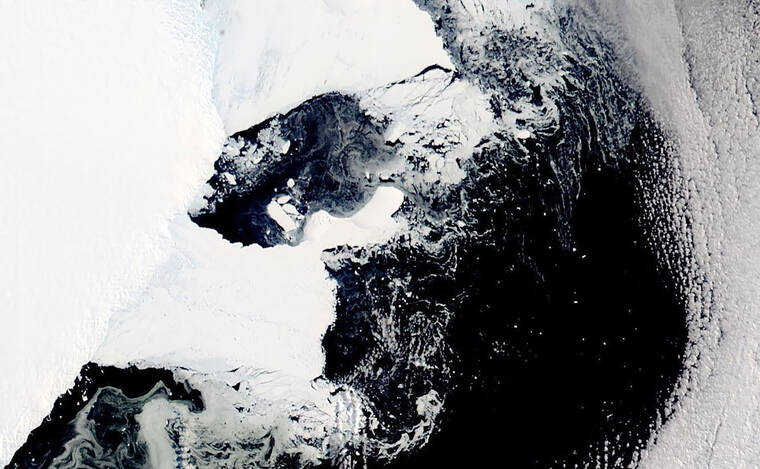Ice shelf collapses in previously stable East Antarctica
An ice shelf the size of New York City has collapsed in East Antarctica, an area long thought to be stable and not hit much by climate change, concerned scientists said Friday.
The collapse, captured by satellite images, marked the first time in human history that the frigid region had an ice shelf collapse. It happened at the beginning of a freakish warm spell last week when temperatures soared more than 70 degrees (40 Celsius) warmer than normal in some spots of East Antarctica. Satellite photos show the area had been shrinking rapidly the last couple of years, and now scientists wonder if they have been overestimating East Antarctica’s stability and resistance to global warming that has been melting ice rapidly on the smaller western side and the vulnerable peninsula.
ADVERTISING
The ice shelf, about 460 square miles wide (1200 square kilometers) holding in the Conger and Glenzer glaciers from the warmer water, collapsed between March 14 and 16, said ice scientist Catherine Walker of the Woods Hole Oceanographic Institute. She said scientists have never seen this happen in this part of the continent, making it worrisome.
“The Glenzer Conger ice shelf presumably had been there for thousands of years and it’s not ever going to be there again,” said University of Minnesota ice scientist Peter Neff.
The issue isn’t the amount of ice lost in this collapse, Neff and Walker said. That is negligible. It’s more about the where it happened.
Neff said he worries that previous assumptions about East Antarctica’s stability may not be correct. And that’s important because if the water frozen in East Antarctica melted — and that’s a millennia-long process if not longer — it would raise seas across the globe more than 160 feet (50 meters). It’s more than five times the ice in the more vulnerable West Antarctic Ice Sheet.
Helen Amanda Fricker, co-director of the Scripps Polar Center at the University of California San Diego, said researchers have to spend more time looking at that part of the continent.
“East Antarctica is starting to change. There is mass loss starting to happen,” Fricker said. “We need to know how stable each one of the ice shelves are because once one disappears” it means glaciers melt into the warming water and “some of that water will come to San Diego and elsewhere.”


